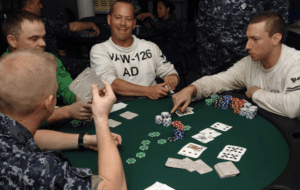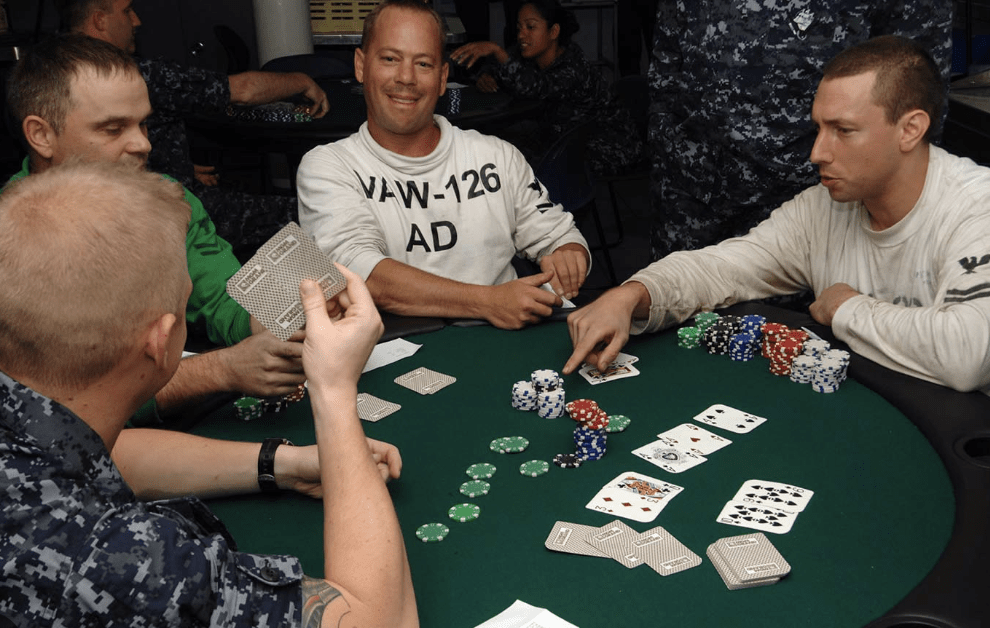For my critical play, I chose poker, a storied game designed for players young and old. Poker is said to have been developed communally; there is no single developer, although historians believe it may have roots as a 10th-century Chinese domino-card game. While many variations are played through online platforms, I played with physical cards and chips and my roommates in real life. I began playing poker this past summer with some of my coworkers, and found it an engaging and thrilling way to hang out with friends in a casual setting, but never truly considered how addictive it may be, perhaps because we played with relatively small buy-ins ($10).
Poker, whether played in a casino, online platform, or crusty dorm room, walks a fine line between engaging entertainment and potential addiction. Its blend of skill and chance, social interaction, and financial stakes creates an environment that can trap even the most disciplined players, who otherwise display no hints of addiction. At the heart of poker’s draw is its intermittent reinforcement schedule. Players aren’t rewarded every time they play, but rather at unpredictable intervals. This unpredictability seems to trigger the brain’s reward system (like slot machines), as the thrill of not knowing when the next big win will come keeps players hopeful and makes them return.
Additionally, poker’s unique mix of skill and chance gives players the illusion of control, which makes the largely random/lucky payouts even more addictive. Unlike games of pure chance, such as slot machines or roulette, poker requires strategic thinking and even reading opponents. This combination can lead players to believe that they can always “get better” and turn their luck around on the next hand, perpetuating continued play, even when a player is down a ton of money.
The concept of “near misses” from the reading was quite striking to me, as it is often what has drawn me back into a competition or game after losing. The sense of just losing out on something is so deeply unfulfilling that it drives players (including myself) to come back. Poker is filled with “near misses,” where players feel they were just one card away from winning. Even when I folded or lost a hand, I’d often believe I was on the verge of a significant win. It was also interesting to note that when hands are revealed, hindsight bias kicks in, which led us all to think we would have easily won if the same hand were played again. This sense of almost winning, combined with the feeling that success is within their control, fosters a false confidence that draws us back time and time again.
The social aspect of poker cannot be understated. Whether in-person or online, poker is often played in a social setting. In addition to the fact that poker is often accompanied by a drink (or two), the camaraderie, competition, and peer validation contribute to its addictive nature. The potential to win money can also be a powerful motivator. While the stakes felt less real when I played due to a smaller buy-in ($10), I can easily imagine that for larger pots, the possibility of a big win can drive individuals to keep playing despite losses.
Unlike pure chance games such as slot machines or lottery tickets, being great at poker requires skill, and success is often replicable. However, this skill element also contributes to its addictive potential. Players may invest significant time and money in honing their skills, often believing that mastery will lead to consistent wins, which is never guaranteed due to the inherent randomness of the game.
To mitigate the risk of addiction, poker could be played with rules that promotes slightly more responsible play. For example, implementing time-out periods after a certain amount of play or setting loss limits could help players manage their gaming habits.
As designers, by understanding the mechanisms that drive addiction, we can better design systems that promote healthy gaming behaviors while maintaining the excitement and challenge that make poker so compelling. In the end, poker’s allure lies in its complexity and unpredictability. It’s a game that mirrors life in its risks and rewards. However, there are benefits to implementing pauses that allow players to step back and realize that the game is, in fact, not real life. 



